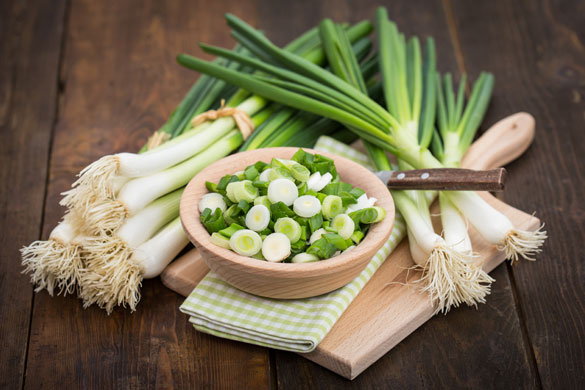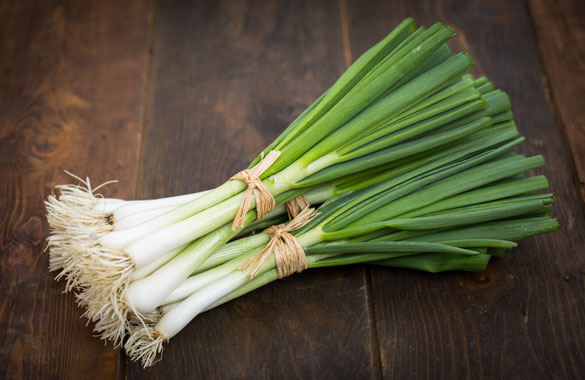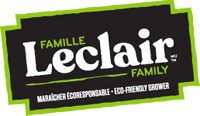Fermes Leclair et Frères Ltée.
“Green onions or shallots?” That is the question
The answer: both! In French, in Québec, oignon vert (“green onion”) is the correct term for this fragrant plant, all parts of which are edible, and which tells us spring has arrived. Échalote is an incorrect term in French, likely borrowed from the English shallot, which can mean green onion as well as “French-from-France” shallots (adding to the confusion, there’s also the English term scallions!). Linguistic distinctions aside, the confusion isn’t that surprising when you consider that green onions are part of the Alliaceae family, like shallots (the French kind), chives, onions and leeks. Green onions originally came from Northern China, and it was the Romans, who were big fans of onions and the other members of the Alliaceae family, who first grew them in the West. As green onions aren’t a major farm crop, though, data on the subject remain rather vague.
Just about every part of a green onion is good
The green onion’s fresh, subtly spicy taste make it a great kitchen go-to for adding fragrance to all kinds of dishes. From the white root end, whose flavour recalls that of yellow onions, but with a little more sweetness, to the dark green shoots, which make a great substitute for chives, you can eat every part of this plant (except one: you need to cut off the tiny roots at the white end). Fun (and useful) fact: if you keep the base of the root along with a small part of the bulb and put it in water, after a few days new shoots will grow.
When it comes to nutritional value, green onions compare favourably with other vegetables, and they’re low in calories (about 4 cal per onion). But because we tend to eat them in such small amounts, the ultimate vitamin and mineral intake is often negligible. It’s worth noting, though, that they contain flavonoids and sulphur compounds thought to help prevent cardiovascular disease, cancer and other age-related illnesses.

Green onions: raw or cooked?
The delicate texture and flavours of the green onion are best appreciated in its raw form. It’s used as a condiment in many Asian recipes, and also makes a superb addition to soups, salads, omelettes, pasta, fish and gratins. For something different, dip whole green onions in a tempura-type batter and fry them a few seconds in hot oil—delish! And whenever a recipe calls for chives, you can easily substitute thinly sliced green onion shoots.
Fermes Leclair: green onions from Québec from mid-June to mid-October

Fermes Leclair’s fields teem with green onions all summer and into fall. We harvest and sell them, according to demand, in bunches, in waxed cardboard boxes lined with crushed ice, as well as in regular boxes.
At home, they keep beautifully in the refrigerator, in an open bag or one with micro-perforations for about a week. To preserve them for longer, you can keep the root ends in a container of cold water. You can also freeze green onions after blanching them, but of course this isn’t the ideal way to store them.
